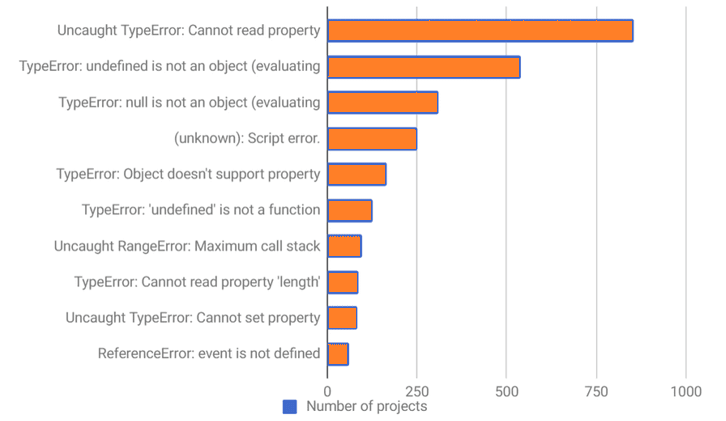JavaScript Errors
JavaScript indeed offers numerous advantages that elevate website capabilities. Client-side JavaScript boasts robust capabilities vital for driving contemporary web applications. Nevertheless, without a thorough grasp of the intricacies governing script behavior, one's applications could suffer from compromised performance and functionality due to unforeseen nuances.
JavaScript Debugging
JavaScript has faced criticism for being a challenging language to debug. Its programs tend to be larger, and the process of debugging and maintaining these scripts becomes increasingly complex, partly due to JavaScript's dynamic characteristics. However, preemptive mitigation of these challenges can be achieved by identifying and addressing code defects during the early stages of development, ultimately mitigating the quality-related challenges associated with JavaScript.

Typescript
While executing JavaScript code, diverse errors may arise. Some of these errors can be perplexing initially, and the line numbers provided might not always provide clear insights. Many of the errors that surface during web browser compilation of JavaScript involve undefined or null type errors. Adopting the strict compilation environment of a static checking system like TypeScript can substantially mitigate such errors. This setup offers preemptive warnings about undefined or expected types. Even without TypeScript, employing guard clauses to verify object existence before utilization can help prevent such issues.
There are many types of errors but they typically fall into one of 3 classes.
- TypeError - These errors occur when some value is not the type it's expected to be.
- SyntaxError - These errors occur when the JavaScript engine is parsing a script and encounters syntactically invalid code.
- ReferenceError - These errors occur when code refers to a value that does not exist in the current scope.
Rollbar conducted a compelling experiment by collating and analyzing all encountered errors, subsequently compiling a summary that tallied the frequency of each error occurrence. This methodology provided a tangible perspective on the prevalent JavaScript errors that were widespread, effectively enabling them to gauge the actual statistical prevalence of these errors. Such an approach aids in understanding the common pain points and challenges that developers face when dealing with JavaScript code.

Discrepancies in error messages across various browsers are common, leading to diverse messages for the same error scenario. In upcoming articles, we will investigate into the prevalent errors frequently encountered by developers in client-side JavaScript applications. The focus will be on strategies to mitigate or eliminate these errors, enhancing the overall robustness and reliability of the codebase.